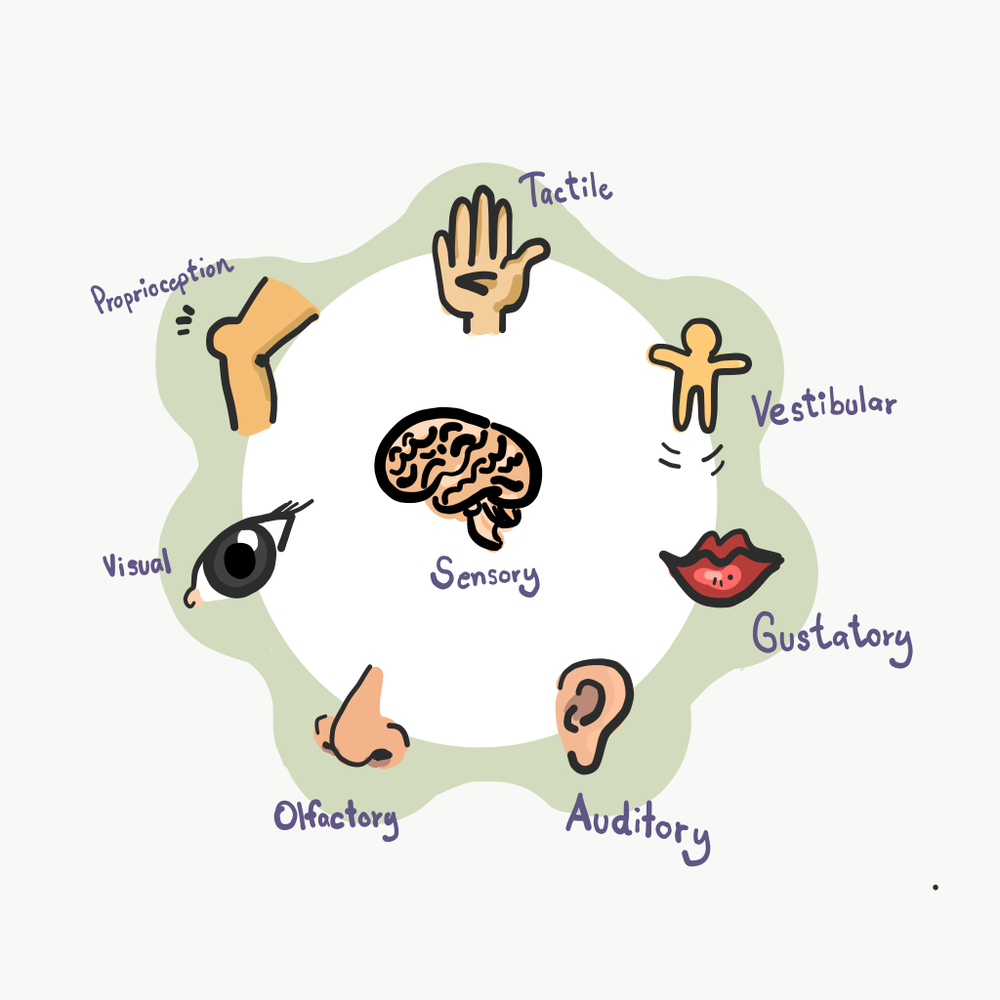Sensory Processing Disorder -- How to Help With Sensory Overload?
Jan 17, 2022 Sensory processing disorder is a condition in which the brain has trouble receiving and responding to information that comes in through the senses.
In This Article
What Is Sensory Processing Disorder?
Sensory processing occurs when the nervous system receives messages from the senses and reacts to those messages. Although a child with SPD receives the messages, the messages may become jumbled, causing an overreaction or no reaction at all.
Signs of Sensory Processing Disorder (SPD) may include uncoordinated movements, pain when certain noises are heard, extreme sensitivity to touch or the inability to interact with others.

It’s important to realize symptoms may be inconsistent and occur at different times or not at all. Reactions may also be heightened depending on the day the child has had.
The senses that are affected by Sensory Processing Disorder include: sight, sound, touch, smell, taste, balance and spatial orientation, muscle or joint movement and internal sensations like hunger or thirst.
brainbalance.com
Although sensory issues are often time accompanied with Autism, that is not necessarily always the case.
Signs of Sensory Processing Disorders
- Don’t like to brush their teeth.
- Can be sensitive to loud sounds.
- Don’t like bright lights.
- Don’t like to brush, wash or cut my hair.
- Like to smell people and objects sometimes.
- Some smells really bothers them.
- Don’t like tags on my clothes.
- Don’t like to wear clothes.
- Like wearing the same clothes.
- Enjoy being squeezed, they like pressure.
- Sometimes they don’t like to be touched.
- Don’t want their hands dirty.
- Have poor fine motor skills.
- Have poor gross motor skills.
- Get overstimulated and meltdown.
- Get fearful and anxious sometimes.
- Overreact to minor scrapes and cuts.
- Cling to adults they trust
- Sometimes they walk on their toes.
- Picky eater.
- Can be clumsy and fall over things sometimes.
- Sometimes they lose their balance.
- Crave fast spinning.
- Have poor body awareness.
Boost Your Child’s Speech Development!
Improve language & communication skills with fun learning!

Sensory Integration Therapy
The first piece of advice I have for you is to get a full evaluation from an occupational therapist and then receive subsequent therapy. The therapist will have your child participate in sensory integration therapy in order to decrease their sensory related issues.
The key component to sensory integration therapy is to introduce the experience gradually. Your therapist will look for signs that your child is overwhelmed and will modify therapy appropriately. They will also teach you activities and strategies to use at home. Remember, as any therapy goes, the more the child is exposed and practicing, the better the outcome.
Sensory Activities & Strategies to Use at Home (inspiration from Brain Balance Centers):
- Lava lamps are great for kids who have a sensitivity to light. These allow the parents to brighten and dim the room as necessary.
- Headphones can be used to block out any loud noises such as fire trucks, thunder or loud music. Calming sounds such as waves, birds and nature can also be introduced. WORD OF CAUTION – Do NOT use on children who have autism spectrum disorder. Once these kids use headphones, you will have a VERY DIFFICULT time removing them.
- Make trying new foods a game. They even have food games out there that you can use as a means to introduce new textures to your child.
- Jumping and balancing reduce vestibular disorder. Indoor or outdoor trampolines, swings, ride-on or rocking toys and seesaws are all helpful.
- Aromatherapy for olfactory sensitivity is often successful. Older children can be given a small bottle of essential oil, such as peppermint, to mask scents that are unpleasant to them.
- Free play with mud, play dough, sand, water or bubbles help improve tactile processing. Kneading bread dough is a fun and challenging activity.
- Deep pressure and weighted blankets can be great for kids who have an issue with touch. Some children like light touch and pressure, while others will benefit from tight clothing.
It’s important that any object or strategy that you use, you must be consistent and use it for at least 2 weeks before moving on to another product. The professional therapist that you are seeing will be able to guide you through the process and give you specific products that will help your child be successful.
In addition to these tips, you can download our Speech Blubs app and work on some of our fantastic communication-centered activities.